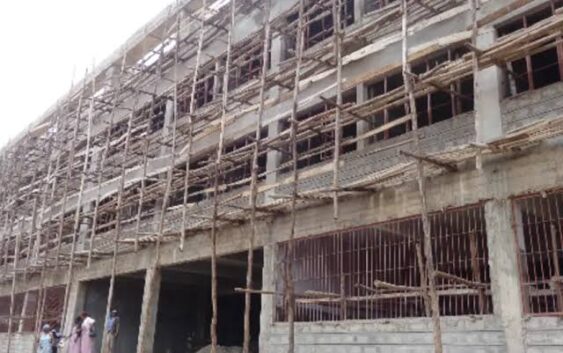- LG ENERGY SET TO BUILD NEW PRODUCTION PLANT FACILITY FOR ELECTRIC VEHICLES IN MOROCCO
- HOW GREEN HYDROGEN PROJECT CREATED OVER 200 JOBS IN NAMIBIA
- HOW EGYPT LOW-INCOME HOUSING FINANCE INITIATIVE GOT EGP70BILLION FUNDS
- CHIRUNDU BORDER POST TRANSFORMATION SET TO TAKE EFFECT IN ZIMBABWE
- MOZAMBIQUE GOVT. SET PLANS FOR PETROLEUM EXPLORATION AFTER CONTRACT APPROVAL
BOTSWANA LEATHER PARK: WHY THE CONSTANT DELAY IN COMPLETING THE PROJECT

The Leather Park has been in the pipeline since 2014 with little progress, a fact that has frustrated authorities and residents in the border town.
The implementation of the Leather Park was said to be delayed by the need for project reconfiguration to address emerging risks from a change in the project scope and location. The declining national herd warranted a review of the project’s business case to determine the minimal amount of raw material required to kick-start a viable leather processing operation.
Briefing parliamentarians on this, Acting Minister of Entrepreneurship, Molebatsi Molebatsi, said the implementation of the Leather Park has commenced and the first phase of the project is expected to be complete by the end of the third quarter of the 2024–2025 financial year
“In order to leverage off existing latent capacity, and to facilitate a quick turnaround, the project has been restructured by speeding up the delivery of the Botswana Meat Commission (BMC) tannery,” he said.
“This step is in line with the overarching objective of rapidly developing meat and leather value chains. “The initiative includes the development of the effluent plant infrastructure, which is planned to manage both solid and liquid waste generated from the plant.” Molebatsi said the completion of the first phase will not only facilitate local value addition to the raw materials but will enable the processing of leather to what is called the “wet blue stage”. The first wet blue processed leather is expected to come out of the facility by December this year which will be followed by the development of the secondary facility in the second phase to transition production from tonnage to post-tonnage to phase three of the finished leather stage.
The acting minister said the final stage is wholly intended for entrepreneurs in the private sector, particularly SMEs.
“In pursuit of greater efficiencies within public sector delivery, phase three work will be done jointly between LEA [Local Enterprise Authority], CEDA [Citizen Entrepreneurial Development Agenc], NDB [National Development Bank], BDC [Botswana Development Corporation] and the commercial banks,” he said. “The development and other financiers are expected to provide capacity building and financial support to SMMEs, through their mainline portfolios.”
Once operational, the park is expected to supply the private sector with hides and skin, raw to finished leather tanneries and the manufacturing of different leather products. These include shoes, belts, jackets and others thereby playing an instrumental role in stimulating economic activity.
The project entails the development of a complex for different tanneries, supported by the BMC and primary infrastructure such as a common effluent treatment plant, sewage treatment plant and others.
The government has said the plant could employ up to 10,000 employees when fully functional, marking a sustainable economic diversification effort.
SOURCE: mmegi

